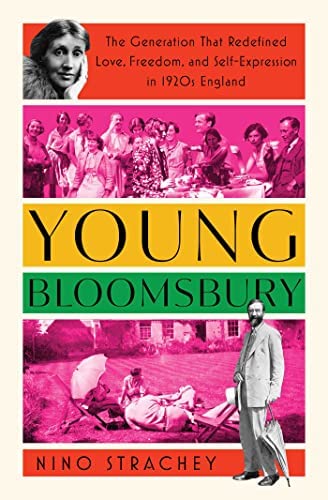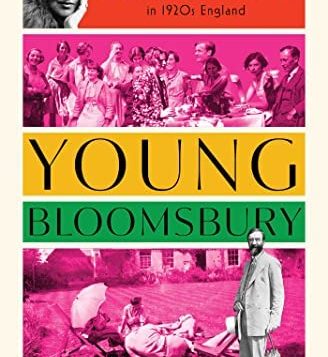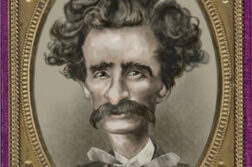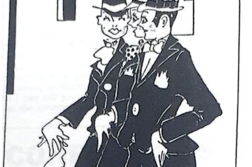 YOUNG BLOOMSBURY
YOUNG BLOOMSBURY
The Generation That Redefined Love, Freedom, and Self-Expression in 1920s England
by Nino Strachey
Atria Books. 304 pages, $29.
EVEN IN A BOOK that opens with a Dramatis Personae, it’s easy to lose track of the people who come and go in Young Bloomsbury. Even the places where they gathered (Tidmarsh Mill, Ham Spray, Tavistock, Garsington, Charleston Farm, Swallowcliffe) tend to blur as the reader tries to keep track of, say, Stephen “Tommy” Tomlin, or Ralph Partridge, or Roger Senhouse, or Eddy Sackville-West, as opposed to Eddie Gathorne-Hardy. Young Bloomsbury is a desultory, rambling sort of book, without a timeline, overview, or single figure to carry us through, not even its two presiding spirits, Virginia Woolf (Mrs Dalloway) or Lytton Strachey (Eminent Victorians).
But, then, the book’s author, Nino Strachey, was literally surrounded by portraits and photos of her ancestors when she composed it. Here is Nino, for instance, musing about “Beautiful Teddy Strachey, so handsome that he was known as ‘Venus’ in the Grenadier Guards,” or about “His uncle Harry, an artist who painted lyrical images of athletic young men in his rendition of the naked torso.” There were so many Stracheys (Lytton was one of thirteen children) that one could use a family tree. Instead, we have excerpts from letters still kept by the Strachey family, not to mention the heap of books already published in what has become a cottage industry of Bloomsbury history, which even includes a biography titled simply Bloomsbury Stud: The Life of Stephen “Tommy” Tomlin—a sculptor who not only made busts of Virginia Woolf and Lytton Strachey but also was desired sexually by just about everyone. Sex, of course, is one of the reasons Bloomsbury has been written about so much; though one may, reading this personal, intimate, anecdotal book, have to google occasionally to identify the individuals being discussed in the roundelay.
However, Nino Strachey’s book does have two explicit themes. The first is that there were two Bloomsburys: the one that began in 1906 at Cambridge University when John Maynard Keynes, the eminent economist, and Lytton Strachey founded a discussion society called The Apostles, in which great minds talked about ideas with handsome young undergraduates; and the one that resumed after World War I, when a new generation (who were part of, but not co-extensive with, the “Bright Young Things”) emerged. They came to Old Bloomsbury because they were looking for a society, a place, in which they could not only write, paint, sculpt, and talk frankly about sex, but couple, and thruple, outside the bounds of Victorian matrimony.
Couple and thruple they did, like bunnies, which leads us to the second theme of Strachey’s book: what she calls their “gender fluidity” (though I’m not sure that is quite the right word for it). Suffice it to say, the members of both Bloomsburys fell in love, or lust, had sex, and moved on to other partners, without apparent resentment, heartache, or feelings of rejection. They saw no point in divorce: if a husband or wife fell in love with someone else, or decided to live apart, that was no reason to dissolve the union. Threesomes and shared lovers were almost the norm as the handsome young Oxbridge graduates kept showing up before and after the War, some of them butch, some femme, all available to both sexes. Old and Young Bloomsbury seem to have achieved the dream of a communal sexual utopia that inspired the Oneida Community in 19th-century America, or movies, much later, like Bob & Carol & Ted & Alice. However, even after reading this book, I found it very hard to say just what Bloomsbury was: bisexual, homosexual, polyamorous, genderfluid, or simply English intellectual.
Whatever they were, even during their lifetimes they were well known. The most famous members of Old Bloomsbury were Woolf (To The Lighthouse, Orlando, A Room of One’s Own), Keynes (The Economic Consequences of the Peace), Lytton Strachey (Eminent Victorians), and E. M. Forster (Where Angels Fear to Tread, Maurice). Young Bloomsbury, in contrast, produced novels like Eddy Sackville-West’s Piano Quintet (1925), David “Bunny” Garnett’s Lady Into Fox (1922), and Julia Strachey’s Cheerful Weather for the Wedding (1932), which are less well known today. By the time Young Bloomsbury arrived, the young Cecil Beaton was photographing their authors’ parties, houses, and hats for Vogue. The age of the magazine had begun. Today, we also have their letters and diaries, chiefly Virginia Woolf’s. The denizens of both Bloomsburys valued discussion and honesty about all subjects, especially their sex lives. Wrote Woolf in her diary:
There was nothing one could not say, nothing that one could not do, at 46 Gordon Square. … Sex permeated our conversation. The word bugger was never far from our lips. We discussed copulation with the same excitement and openness that we had discussed the nature of good. … It may be true that the loves of buggers are not—at least if one is of the other persuasion—of enthralling interest or paramount importance. But the fact that they can be mentioned openly leads to the fact that no one minds if they are practiced privately. Thus many customs and beliefs are revised.
John Maynard Keynes put it this way: “We repudiated entirely customary morals, tradition, and conventional wisdom. We were … immoralists.”
Homosexuality was still illegal in Britain when the Bloomsbury set was playing musical beds. “Plainclothes policemen patrolled popular cruising spots,” Strachey writes, “looking for signs of difference; wide-legged trousers, colored shirts, a powdered face. Painted boys were portrayed as a social menace, endangering British society with their moral contagion, a predatory presence in the streets around Piccadilly.” But this hardly stopped Philip Ritchie, an Oxford undergraduate, from satisfying “Lytton’s growing aspiration for aristocratic connections and his preference for an aesthetic sensibility combined with hints of dominant masculinity.” And Philip Ritchie was only one in a series. Again, from Virginia’s diary: “Lytton has thrown over Philip, and is on with Roger Senhouse, whom he wants us to be nice to.” As Nino explains: “Senhouse was a slightly enigmatic figure, finding sexual release in sadomasochistic fantasies. Lytton loved to be spanked, and Senhouse happily obliged.”
It would be hard to imagine a more formidable queen than Lytton Strachey: arch, maso-chistic, attracted to masculine tops. When World War I erupted, most of the original Bloomsbury set were conscientious objectors. Lytton took a pillow to his hearing to sit on because he had hemorrhoids and, when asked what he would do if a German soldier attempted to rape his sister, replied: “I would try to interpose my body between them.” He and Woolf are the two presiding spirits of Bloomsbury, or at least the ones you keep hoping will be quoted. Lytton made a home for himself at Ham Spray (where do they get these names?) with the apparently heterosexual artist Dora Carrington in a platonic marriage of sorts, during which both of them sometimes had sex with the same young man. In fact, Dora married Ralph Partridge, one of Lytton’s boyfriends, to keep him in their ménage à trois with Lytton, and after Dora killed herself—which was soon after Lytton died—Ralph married another woman, an English writer named Frances Marshall.

Virginia Woolf’s attitude toward homosexuality, however, was ambivalent. On the one hand, she had a famous affair with Vita Sackville-West and wrote Orlando, one of the classic novels about sexual changelings. She even expressed pity to her married, heterosexual sister Vanessa because, as Virginia wrote to her: “You will never succumb to the charms of your own sex—What an arid garden the world must be for you. What avenues of stone pavements and iron railings! Greatly though I respect the male mind, and adore Duncan Grant (but, thank god, he’s a hermaphrodite, androgynous, like all great artists) I cannot see that they have a glowworm’s worth of charm about them.”
On the other hand, Nino writes: “Virginia worried about the negative influence of pretty young men on her susceptible friends, resenting the triviality of homoerotic conversation exchanged: ‘I fought with Eddy Sackville-West over this. How silly, how pretty you sodomites are I said, whereat he flared up and accused me of having a red-nosed grandfather.’” However, “what she could forgive in Eddy she found inexcusable in Cecil Beaton, dismissing him as a young boy kept for sex with older men: ‘I say, judging from your style and manner (this is what I say to Cecil Beaton), you are a Mere Catamite.’” And when Lytton Strachey and Duncan Grant fell in love with her Hogarth Press assistants, she chastised them: “My anti-bugger revolution has run all the way around the world as I hoped it would. I am a little touched by what appears their contrition, & their anxiety to condone their faults. … The pale star of the bugger has been in the ascendant too long.”
It was as if one could be homosexual, but that was not enough; one had to be available to both sexes, and brilliant. Of course, they were subject to the usual miseries. Tommy Tomlin, despite the fact that everyone wanted to sleep with him, suffered bouts of deep depression that ultimately caused his wife, Julia Strachey, to leave him. And then there was aging, for the original Bloomsburys. “My dear Virginia,” Clive Bell said one day while taking a walk with Virginia, “life is over. There’s no good denying it. We’re 45. I’m bored, I’m bored, I’m unspeakably bored. I know my own reactions. I know what I’m going to say. I’m not interested in anything. Pictures bore me. I take up a book & put it down. No one’s interested in what I think any more. I go about thinking about suicide.” Twenty-four hours later he met a young actress and was back to being the “Don Juan of Bloomsbury.” Virginia’s take was more succinct: “My theory is that at 40 one either increases the pace or slows down.”
After World War I, they increased the pace. The original group not only reassembled in Gordon Square but were given a new lease on life via the young generation who found their way to their doorsteps. Like all young people, they kept their elders from petrification and at the same time drew sustenance from them. “The growing number of young fringe-Bloomsburys who gathered like bees around a honey-pot,” Nino writes,
were not just seeking celebrity; they were seeking affection. As queer young people they were looking for a place where they could be themselves, amidst adults who would accept them for who they really were. Bloomsbury writers and artists seemed to have defied conventional morality and lived to tell the tale—faith, fidelity, heterosexuality, and patriotism had all been rejected, but without noticeable penalty. Ahead of their time, they had established an open way of living that would not be embraced for another hundred years.
Young Bloomsbury belonged to a different England; the shock and horror of the Great War gave way to the Bright Young Things. Some of the latter even discovered Berlin and tried conversion therapy at a German clinic run by one Doctor Marten, where, as Lytton described it in a letter to Dora: “They walk about haggard on the lawn, wondering whether they could bear the thought of a woman’s private parts, and gazing at their little lovers, who run round and round with a camera, snapshotting Lytton Strachey.” In short, things got quite gay. One chapter in the book is titled “The Cult of the Effeminate,” with subsections called “Mincing in Black Velvet” and “Painted Boys,” culminating in the incomparable Stephen Tennant (famously photographed “in a tunic, in an attitude”). In 1923, Eddy Sackville-West gave a gender-reversal party at which his friend “Cedric had on an unbuttoned brocade waistcoat with a pair of black lace drawers underneath.” And here’s Eddy going out in the winter of 1928, in Berlin, with a young man who “led me with his dog-lead in the street (at night) as we were on our way to dance at the Lokal. I nearly expired with ecstasy.”
All this will be familiar enough to gay readers. Yet the operative word in Nino’s book is “queer.” The only time the word “gay” is used is to describe a “gay novelist” named C. H. B. Kitchin, of whom I’d never heard, but who was, Wikipedia says, a prosperous businessman who lived for years with a male lover and produced five novels with gay themes. At the end of the book comes the even more startling news that Gerald Murphy, the model for Dick Diver in F. Scott Fitzgerald’s novel Tender Is The Night, was what his friends Hemingway and Fitzgerald would have called a “pansy.” In other words, most of this behavior can be understood within the homosexual and bisexual categories. Nevertheless, “as the mother of a child who identifies as gender-fluid and queer,” Nino Strachey dedicates this book to “all those who push beyond the binary.”
But is that what the Bloomsburys were—genderfluid or nonbinary? Eddy Sackville-West walking to a bar in Berlin on a leash held by his German boyfriend, Lytton being spanked by Roger Senhouse, Ralph Partridge moving from a boyfriend of Lytton’s to the husband of Frances Marshall, or E. M. Forster sharing the policeman Bob Buckingham with his wife over the span of many years were not necessarily genderfluid. Those who slept with both men and women we could call bisexual, though it’s not clear that they thought of themselves in this way. The one time Cecil Beaton had sex with a woman, for instance, it was because that woman was Greta Garbo. So what was that, sex or snobbery? Bloomsbury seems to have been an inimitable blend of elements that rarely coexist. Amid the disillusion caused by the War, the onslaught of modernity, fatigue with Victorian mores, a group of artists got together who refused, as a point of pride, to consider anything taboo. “You can’t imagine what it has been for me to know Bloomsbury,” one of the Young Bloomsburys told Virginia Woolf. “They’re different human beings from any I thought possible.”
Andrew Holleran’s latest novel is The Kingdom of Sand.






